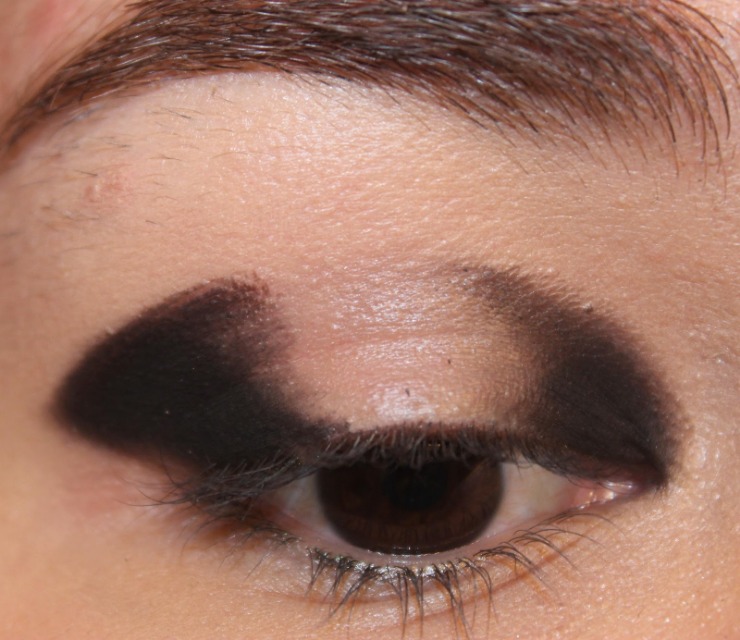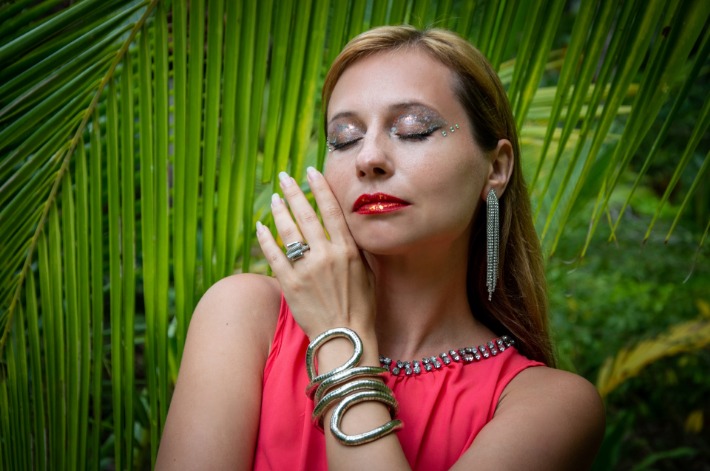Choosing the Right Primer
Selecting the right primer is a crucial step in achieving flawless eye makeup. A good eye primer creates a smooth canvas, enhances the pigmentation of eyeshadows, and helps your look stay in place all day. With so many options available, understanding the different types of primers can help you choose the best one for your needs and ensure your eye makeup looks vibrant and lasts longer.
Types of Eye Primer
Choosing the right primer is essential for creating a flawless eye makeup look and ensuring that your eye shadow stays vibrant and lasts longer. The primer acts as a base that smooths the eyelid surface, minimizes creasing, and enhances the color payoff of your eye shadows.
There are several types of eye primers available, each suited for different needs and preferences. The most common types include silicone-based primers, which create a smooth, velvety finish and provide excellent adhesion for eye makeup. Water-based primers are lightweight and suitable for sensitive skin, offering a more natural finish. Cream or stick primers are ideal for quick application and can add extra pigmentation to your eyelids. Additionally, some primers contain color correctors or concealers to address discoloration or blemishes before applying eyeshadow, ensuring a more even base. Knowing your skin type and makeup goals can help you select the appropriate eye primer for your routine.
Benefits of Using an Eye Primer
Choosing the right primer is essential for creating a flawless eye makeup look and ensuring your makeup lasts all day. An eye primer acts as a base that helps in smoothing out the eyelid surface, making eyeshadow application easier and more even. It also prevents creasing, fading, and fallout, providing a clean canvas for your eye makeup.
The benefits of using an eye primer include increased color payoff, as it intensifies the pigmentation of eyeshadows. It also helps in concealing any discoloration or veins on the eyelids, resulting in a more uniform base. Additionally, eye primer creates a barrier that guards against oils and sweat, significantly extending the longevity of your eye makeup and keeping it fresh throughout the day.
Application Tips for Primer
Choosing the right primer is essential for creating a flawless eye makeup look that lasts all day. Selecting a primer that suits your skin type and addresses specific concerns, such as oiliness or dryness, will ensure better adhesion and vibrant color payoff.
When applying primer, start with a small amount and gently blend it over the entire eyelid using your fingertip or a clean brush. Be sure to extend the primer slightly beyond the lash line to prevent creasing or fading. Allow the primer to set for a minute before applying eyeshadow for optimal results.
For oily eyelids, opt for a mattifying primer that controls excess oil and prevents creasing. If you have dry or mature skin, choose a hydrating or nourishing primer to create a smooth base. For a more vibrant and long-lasting eyeshadow application, consider using a tinted primer that can also help correct discoloration or redness.
Always remember to blend the primer evenly and avoid applying too thickly, as this can cause uneven eyeshadow application. A well-chosen and properly applied primer enhances the longevity and intensity of your eye makeup, providing a professional and polished finish.
Preparing Your Eyelids
Preparing your eyelids is a crucial step in achieving a flawless eye makeup look. Properly priming and cleansing your eyelids helps create a smooth surface, enhances the longevity of your eye makeup, and prevents creasing or smudging. Taking the time to prepare your eyelids ensures that your makeup stays vibrant and fresh all day long, giving you a polished and professional appearance.
Cleaning and Moisturizing
Preparing your eyelids is a crucial first step in creating a flawless eye makeup look. Properly cleaning and moisturizing your eyelids help ensure that your makeup applies smoothly and stays in place throughout the day. Begin by gently removing any excess oil, dirt, or old makeup with a gentle cleanser or micellar water. This minimizes the risk of creasing and smudging. After cleansing, apply a lightweight, eye-safe moisturizer to hydrate the skin and create a smooth, even surface. Allow the moisturizer to absorb fully before applying eye primer or eyeshadow, as this enhances adhesion and longevity. Proper eyelid preparation sets the foundation for vibrant, long-lasting eye makeup that looks polished and professional.
Priming for Long-Lasting Makeup
Preparing your eyelids is a crucial step in achieving long-lasting eye makeup. Proper priming helps create a smooth canvas, making your eyeshadow appear more vibrant and preventing creasing or fading throughout the day. Before applying any makeup, gently cleanse your eyelids to remove excess oil and dirt, ensuring a clean surface for the primer.
Next, select an eye primer that matches your skin tone or is slightly lighter to brighten the eye area. Using your fingertip or a small brush, apply a thin layer of primer across your lids, extending slightly beyond the crease for better adhesion. Allow it to sit for a minute to set, creating a tacky base that anchors your makeup. This base enhances color payoff, improves blending, and maximizes the longevity of your eye makeup, giving you a flawless look that stays put all day.
Color Correcting Base
A color correcting base for eye makeup is an essential primer designed to create a smooth, even canvas for eyeshadow application. It helps to neutralize discoloration, such as redness or dullness, ensuring that eye makeup appears vibrant and long-lasting. Using a color correcting base can enhance the overall look and make eye makeup appear more polished and refined.
When to Use Color Correctors
Color correcting bases are essential tools in eye makeup, used to neutralize discolorations and achieve a flawless look. They are particularly effective when dealing with dark circles, redness, or pigmentation around the eyes. Typically, you should use color correctors before applying your eye shadow or concealer, to create an even canvas. For example, a peach or orange corrector helps neutralize blue or dark circles, while a green corrector reduces redness or irritation. It’s important to choose the right color corrector based on your specific skin concerns, and apply it sparingly to avoid a heavy or cakey appearance. Using a color corrector at the right time can enhance the longevity and vibrancy of your eye makeup, making your eyes look brighter and more refreshed.
Choosing the Right Color Corrector
When selecting a color correcting base for eye makeup, it is important to consider your specific skin concerns and the color correction needed. A good color corrector helps create a more even and vibrant eye look by addressing issues like darkness, redness, or dullness around the eyes. Picking the right shade depends on understanding the color wheel and how different hues counteract common eye area imperfections.
For instance, using a peach or orange corrector can effectively neutralize blue or purple dark circles, especially on medium to dark skin tones. Conversely, a yellow corrector is ideal for brightening and countering any dullness or discoloration on lighter skin. Green correctors are perfect for concealing redness caused by irritation or broken capillaries, making them a versatile choice for redness around the eyes. Remember to apply a small amount of product and blend thoroughly to achieve a flawless base for your eye makeup.
Concealer as a Base
Concealer is an essential base for eye makeup, providing a smooth and even canvas for eyeshadows and other products. It helps to hide imperfections, dark circles, and discoloration around the eyes, ensuring that the colors appear more vibrant and long-lasting. Using concealer as a base can also prevent creasing and fallout, giving your eye makeup a polished and professional look from the start.
Using Concealer to Cancel Out Darkness
Using concealer as a base for eye makeup can greatly enhance the overall look by creating a smooth, even canvas and canceling out any darkness or discoloration around the eyes. To achieve this, select a concealer that matches your skin tone or is slightly lighter to brighten the area. Applying concealer properly helps in brightening the under-eye area and preventing eyeshadow from settling into fine lines or creases.
- Start by moisturizing the eye area to ensure smooth application.
- Apply a small amount of concealer directly onto the dark circles or discolored areas.
- Gently blend the concealer using your ring finger or a makeup brush, working from the inner corner of the eye outward.
- Set the concealer with a translucent setting powder to prevent creasing and prolong wear.
- Once set, proceed with your eyeshadow application, knowing the base has canceled out darkness and created an even surface.
Applying Concealer for Best Results
Using a concealer as a base for eye makeup is an effective way to create a smooth, even canvas that enhances the longevity and vibrancy of your eyeshadow. It helps to conceal any imperfections or discoloration on the eyelids, ensuring that the true colors of your eye makeup stand out. When applying concealer as a base, choose a shade that matches your skin tone or is slightly lighter for added brightness.
Start by gently patting a small amount of concealer onto your eyelids using your fingertip or a flat brush. Blend it seamlessly into the skin, covering any discoloration or veins. To set the concealer and prevent creasing, lightly dust a translucent setting powder over the area. This creates a matte finish that helps eyeshadow adhere better and last longer throughout the day.
For best results, apply the concealer before your eyeshadow, and make sure to blend well at the edges to avoid harsh lines. Using a damp beauty sponge can also help to press the concealer into the skin for a more natural finish. Additionally, choosing a lightweight, creamy concealer will facilitate easier blending and a more comfortable wear. Properly prepped eyelids with concealer as a base can significantly improve the overall appearance and durability of your eye makeup look.
Choosing the Right Foundation for Eyes
Selecting the right foundation for your eyes is a crucial step in creating a flawless eye makeup look. The proper eye base can enhance the longevity of your eyeshadow, prevent creasing, and make colors pop while ensuring your eye makeup stays vibrant throughout the day. Understanding different types of eye primers and bases can help you achieve a smooth, even finish and set the perfect foundation for your creative eye makeup styles.
Types of Eye Foundations
Selecting the right eye foundation is essential for achieving a flawless eye makeup look and ensuring the longevity of your eye shadows. The perfect base can enhance the vibrancy of your colors, smooth out imperfections, and prevent creasing or fading throughout the day. Understanding the different types of eye foundations can help you make an informed choice suited to your skin type and makeup preferences.
There are several types of eye foundations available, including cream, primer, pencil, and liquid formulas. Cream foundations provide good coverage and are ideal for those with dry or mature eyelids, offering a smooth and even base. Eye primers are lightweight and designed specifically to create a smooth surface, minimize creasing, and make eye makeup last longer. Pencils can be used to even out skin tone and provide a base in addition to defining the eye area, while liquid foundations offer a more sheer or buildable coverage, suitable for a subtle or more dramatic look depending on application. Choosing the right type depends on your skin texture, desired finish, and the specific needs of your eye makeup routine.
Shades and Undertones
Choosing the right foundation for your eyes involves selecting shades that complement your natural tones and enhance your features. The key is to identify your undertones, which can be warm, cool, or neutral, to find shades that seamlessly blend with your skin. A well-matched base creates a smooth canvas, making eye makeup application effortless and ensuring it stays vibrant throughout the day. Consider testing foundation shades along your jawline or wrist to see how they blend with your skin and avoid mismatched tones that can detract from your overall look. By selecting the correct hue and undertone, your eye makeup will look more harmonious and polished, highlighting your eyes beautifully.
Application Techniques
Application techniques are essential for creating a flawless eye makeup look. Mastering these methods allows for precise and enhance eye features effectively. From blending shadows to lining the eyes, understanding the right techniques can transform your appearance and boost confidence. Proper application ensures that makeup lasts longer and appears more polished.
Tools for Applying Base
Applying a base for eye makeup is essential for achieving a smooth and long-lasting look. To start, use a clean finger or a small, flat brush to gently apply an eye primer or a concealer over the eyelid. This helps to create an even surface and enhances the color payoff of eyeshadows. For precise application, a flat eyeshadow brush can be used to pack on the primer or concealer onto the lid, especially in the areas where you plan to apply darker or more pigmented shades. A synthetic brush is often preferred for applying eye primers because of its smoothness and ability to pick up product efficiently. For larger areas or to blend the base seamlessly, a soft, fluffy blending brush can be used to soften the edges and achieve a flawless finish. Always ensure that the base is well-blended into the eyelid and into the crease to prevent harsh lines and improve the longevity of your eye makeup.”
Blending and Evenness
Application techniques, blending, and evenness are essential components for creating a flawless eye makeup base. Proper application ensures that the makeup looks smooth and seamless, enhancing the overall appearance.

- Start with a clean, primed eyelid to create a smooth surface for the makeup. Use a primer suitable for your skin type to help it stay in place and prevent creasing.
- Apply foundation or a tinted primer evenly over the eyelid using your fingertip or a brush. This evens out skin tone and provides a uniform base for eyeshadow.
- Use a clean, fluffy blending brush to gently blend the product, ensuring there are no harsh lines. Gradient transitions between shades create a more professional look.
- Build color gradually, applying eyeshadow in thin layers. This allows for better control and more even pigmentation without patchiness.
- Pay attention to symmetry by checking both eyes frequently, and blend thoroughly along the edges to make the transition between colors smooth.
- Finish with a light application of a setting spray or translucent powder to set the makeup and enhance its evenness and longevity.
Additional Tips for a Flawless Base
Achieving a flawless eye makeup look begins with a perfect base that enhances the vibrancy and longevity of your eyeshadow. Properly prepping the eyelids ensures smooth application, prevents creasing, and helps your makeup stay put throughout the day. Incorporating some expert tips can make all the difference in creating a polished and stunning eye makeup look that lasts.
Setting the Base
Setting the base properly is essential for a flawless eye makeup look that lasts all day. Begin by ensuring your eyelids are clean and moisturized to create a smooth surface. Apply a thin layer of eye primer to help your eyeshadow adhere better and prevent creasing. Once the primer dries, lightly set it with a translucent setting powder to mattify the eyelid and reduce oiliness. This additional step helps to neutralize any discoloration and creates an even canvas for your eye makeup. Remember to blend well and use a soft brush or fingertip for a seamless finish. Properly prepared and set eyes will enhance the vibrancy of your eyeshadow and improve its longevity, giving you a polished and professional-looking eye makeup base.
Avoiding Common Mistakes
Creating a flawless eye makeup base is essential for a polished and long-lasting look. To achieve this, start with a clean, well-moisturized eyelid to ensure smooth application. Avoid skipping primer, as it helps to minimize the appearance of fine lines, prevent creasing, and enhances the longevity of your eye makeup. When applying eyeshadow, use a flat brush for pigmentation and a fluffy brush for blending to prevent harsh lines. Be cautious with excess product; excess eyeshadow can fall onto your cheeks, so tap off your brush before application. Set your primer with a light dusting of translucent powder to create a smooth canvas and reduce oiliness. Remember to choose shades that complement your skin tone and eye color for a harmonious look. Lastly, always blend thoroughly to achieve a seamless transition between colors, avoiding patches or uneven application for a flawless finish.



